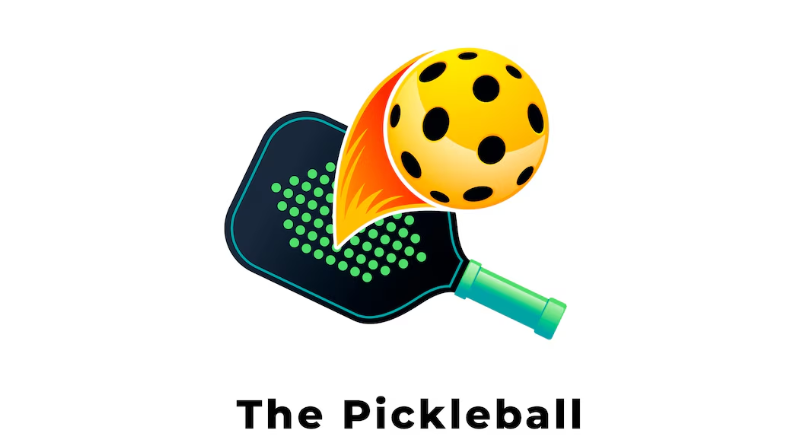Pickleball, one of the fastest-growing sports globally, has captivated players with its accessibility, unique gameplay, and community spirit. While relatively new compared to traditional sports, pickleball has a rich history filled with innovation and growth. Its journey from a backyard pastime to a mainstream sport is a testament to its universal appeal and adaptability.
This article explores the origins of pickleball, its development over the decades, and how key elements like pickleball paddles have contributed to the game’s evolution.
The Birth of Pickleball: A Backyard Invention
Pickleball was invented in the summer of 1965 on Bainbridge Island, Washington, by three friends: Joel Pritchard, a U.S. Congressman; Bill Bell, a successful businessman; and Barney McCallum, an entrepreneur. The story begins with Pritchard and Bell looking for a way to entertain their families during a weekend gathering. They intended to play badminton but couldn’t find a full set of equipment.
In a moment of improvisation, they lowered the badminton net, grabbed ping-pong paddles, and used a perforated plastic ball. Over the next few days, they refined the rules to create a new game that combined elements of tennis, badminton, and ping-pong. The objective was to design a sport that was easy to learn, inclusive for all ages, and enjoyable for both casual play and competitive matches.
The name “pickleball” is often said to have originated from the Pritchards’ family dog, Pickles, who would chase after the ball during games. However, another account suggests the name was inspired by the term “pickle boat,” a rowing term referring to a boat crew made up of leftovers from other teams. Regardless of its origin, the name stuck and has become synonymous with fun, accessibility, and camaraderie.
The Early Years: Building Momentum
In its early days, pickleball was primarily a family game played on driveways and backyards. The simplicity of the setup and rules allowed it to spread through word of mouth, gaining traction among friends and neighbors. By the late 1960s, Barney McCallum took the initiative to formalize the game further, producing paddles and balls specifically for pickleball and promoting it to schools, parks, and recreation centers.
As more people were introduced to the sport, interest grew rapidly. By the 1970s, pickleball courts began appearing in community centers, and tournaments were organized to foster competition and engagement. The sport’s inclusive nature made it especially appealing to older adults, children, and families, contributing to its growth in popularity.
The Rise of Organized Play
The establishment of the USA Pickleball Association (USAPA) in 1984 marked a significant milestone in the sport’s history. The USAPA set standardized rules, promoted tournaments, and supported the development of pickleball at local and national levels. This organization was instrumental in transitioning pickleball from a casual pastime to a competitive sport.
During the 1990s and early 2000s, pickleball expanded internationally, with courts being built in Canada, Europe, and Asia. The sport’s appeal crossed cultural and geographic boundaries, making it a favorite in retirement communities, schools, and recreational programs.
Today, the USAPA—now simply USA Pickleball—continues to oversee the sport’s growth, with more than 4.8 million players in the United States alone. Annual events like the USA Pickleball National Championships and the World Pickleball Championships draw top talent and large audiences, showcasing the sport’s competitive side.
The Role of Pickleball Paddles in Evolution
The development of pickleball paddles has been central to the sport’s growth and evolution. In the early days, paddles were made from wood, offering durability but limited performance. As the game gained popularity, manufacturers began experimenting with new materials to enhance players’ experience.
Modern pickleball paddles are crafted from advanced materials such as composite, graphite, and carbon fiber. These materials provide a balance of lightweight construction, power, and control, catering to a variety of playing styles. Composite paddles, for instance, offer excellent grip and precision, while graphite paddles are prized for their agility and responsiveness.
The shape and design of pickleball paddles have also evolved. Innovations such as elongated paddles for increased reach, textured surfaces for better spin, and vibration-dampening cores for improved comfort have elevated the game’s competitiveness. These advancements ensure that both recreational and professional players have access to equipment that meets their needs and enhances their performance.
Global Expansion and Cultural Impact
As pickleball continued to grow in the United States, it began making significant inroads internationally. Countries like Canada, India, Australia, and the United Kingdom embraced the sport, establishing their leagues and tournaments. The creation of the International Federation of Pickleball (IFP) further supported the sport’s global presence by unifying rules and fostering collaboration among member nations.
Pickleball’s global reach has been fueled by its versatility and adaptability. It requires minimal equipment and space, making it an attractive option for urban and rural communities alike. Its low-impact nature and emphasis on skill over brute force have broadened its appeal across age groups and skill levels.
The sport has also gained media attention and sponsorship, elevating its profile as a serious competitive endeavor. Professional pickleball players have emerged, with endorsements and prize money drawing more athletes to the game. Social media has further amplified pickleball’s popularity, showcasing exciting rallies, player highlights, and community events to a worldwide audience.
The Future of Pickleball
Pickleball’s rapid growth shows no signs of slowing down. The sport is expanding into schools, corporate wellness programs, and professional leagues, attracting new players and fans. Its accessibility and adaptability position it as a sport for the modern era, capable of uniting diverse communities and providing a lifelong activity for players of all backgrounds.
Looking ahead, innovations in equipment, court design, and training methods will likely continue to shape pickleball’s evolution. As the sport becomes more mainstream, opportunities for collaboration, sponsorship, and global competition will further cement its status as a beloved pastime and professional pursuit.
Conclusion
The history of pickleball is a story of creativity, community, and adaptability. From its origins as a backyard invention to its current status as a global phenomenon, the sport has captured the hearts of millions through its simplicity and universal appeal. Key milestones, such as the development of formal rules, the establishment of governing bodies, and advancements in equipment like pickleball paddles, have propelled pickleball into the spotlight.
As pickleball continues to grow and evolve, it remains a symbol of innovation and inclusivity, bringing people together on courts around the world. Whether played for fun, fitness, or competition, pickleball’s legacy as a dynamic and unifying sport is set to endure for generations to come.





